
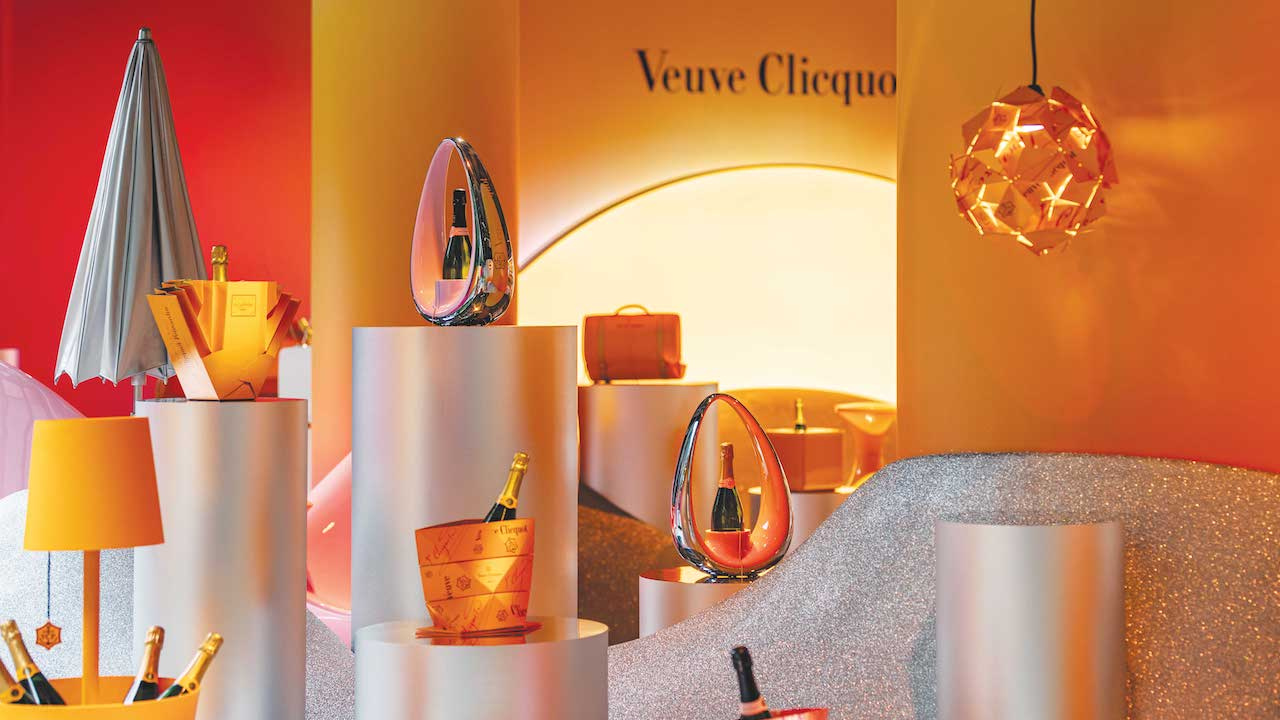
When a celebration calls for some bubbly, the popping of a bottle with the yellow label is usually a reliable sign that a memorable evening is ahead. The sunny sticker stamped with an anchor emblem has come to represent Veuve Clicquot’s status as a luxe champagne of the highest standard — a reputation curated and maintained for centuries. What Veuve Clicquot connoisseurs may not know, however, is that much of what’s associated with the champagne house, like that eye-catching label, crystal-clear consistency, and rosé option, is thanks to the woman who single-handedly changed the game for the brand, and the champagne industry, Madame Clicquot.
In 1805, at a time when women weren’t allowed to open their own bank accounts, Madame Clicquot (née Barbe-Nicole Ponsardin) became a widow at age 27 after the untimely death of her husband François Clicquot. François shared his passion for champagne-making with his wife, and within only a few weeks of his passing, Madame Clicquot made the unprecedented decision to helm the company, which was founded by her late father-in-law, Phillippe Clicquot, in 1772.
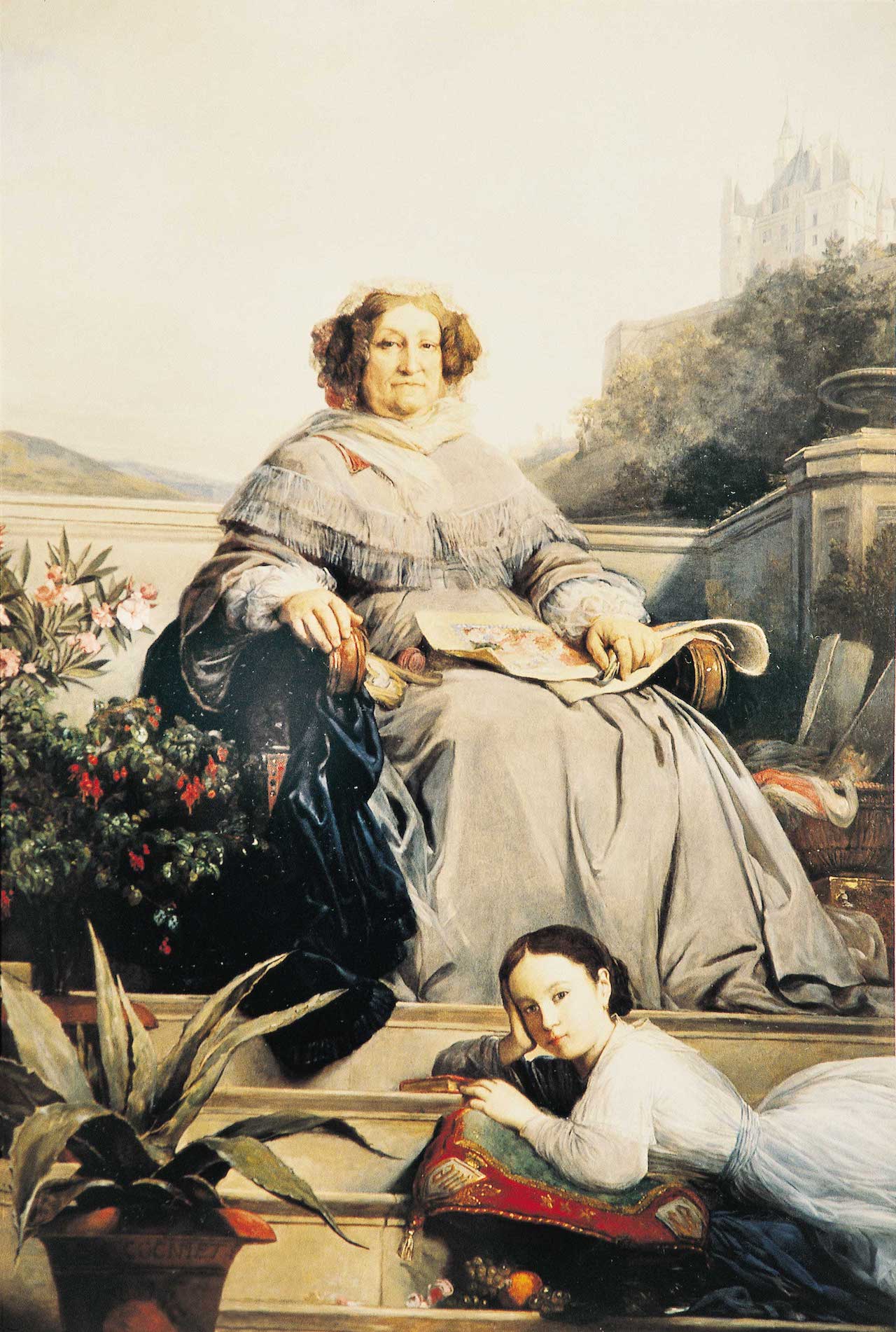
For many years, the house was simply known as Clicquot Ponsardin, but as she worked on building the brand and established herself in the industry, it began to be referred to as Veuve (French for “widow”) Clicquot.
“Madame Clicquot was truly incredible for any time period but especially in the early 1800s,” Carole Bildé, the chief marketing and communications officer for Veuve Clicquot, tells GRAZIA USA. “She was known for her innovations and how she drove the champagne industry forward. Some of her greatest legacies are the riddling table, which is a method of aging champagne that creates clarity in the wine and is still used by more than 90% of champagne brands today. She also created the first vintage champagne in 1811 and the first blended rosé champagne in 1818 by blending white wine with red wine from her Bouzy vineyards.”
Long before Madame Clicquot adorned the bottles with Veuve Clicquot’s instantly recognizable yellow label, founder Philippe Clicquot branded each cork with an anchor as a sign of hope and prosperity. She kept those concepts in mind as she worked hard to realize Philippe and his son François’ dream to have their product lauded internationally. “I want my brand to rank first, from New York to Saint Petersburg,” Madame Clicquot used to say, according to Bildé.
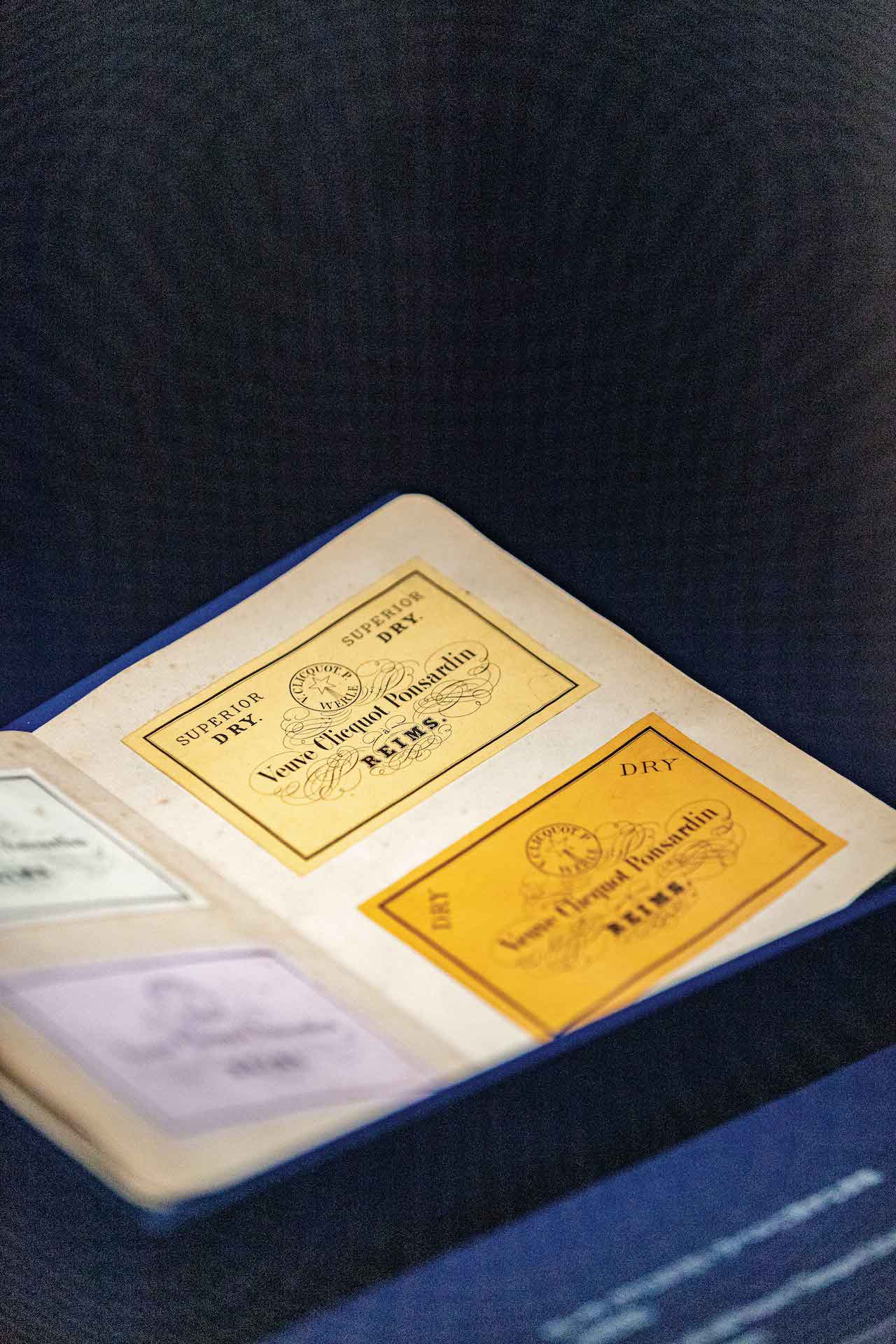
The groundbreaking entrepreneur made her late loved ones’ dreams a reality. Madame Clicquot overcame the continental embargo that was enacted in Europe at the time and delivered wine to Russia, where poet Alexander Pushkin, playwright Anton Chekhov and novelist Nikolai Gogol praised her champagne.
The rest of Madame Clicquot’s long life was dedicated to winemaking. She never remarried and spent every day working at the winery. In 1821, she hired Édouard Werlé as her associate and he became her official successor when she died in 1866. “We have had a short lineage of only 11 Cellar Masters to ensure the continuity of the brand, using techniques, blending methods, plots and more that Madame Clicquot used in her time,” Bildé says of the house, which LVHM acquired in 1986.
This year, Veuve Clicquot has been busy ringing in its 250th anniversary by honoring Madame Clicquot’s visionary and pioneering spirit with celebrations around the world that pay tribute to the “solaire” mindset, her belief that with each new day comes new possibilities.
“We kicked off the year with a new brand campaign, Good Day Sunshine, to reiterate the optimistic, joyful nature of the house,” Bildé says. “We took over the Venice Simplon-Orient-Express, a Belmond Train, in early June.” The sunrise-to-sunset journey started in the Cellars of Veuve Clicquot in Reims, France, and ended in Venice, Italy.
Veuve Clicquot also unveiled THE ICONS Collection this summer, an exclusive offering of the House’s most emblematic objects, all re- edited sustainably — from a presentation box inspired by Japanese origami that opens like a flower, transforming it into an ice bucket, to a mini-fridge redesigned in collaboration with SMEG that keeps champagne bottles chilled for hours.
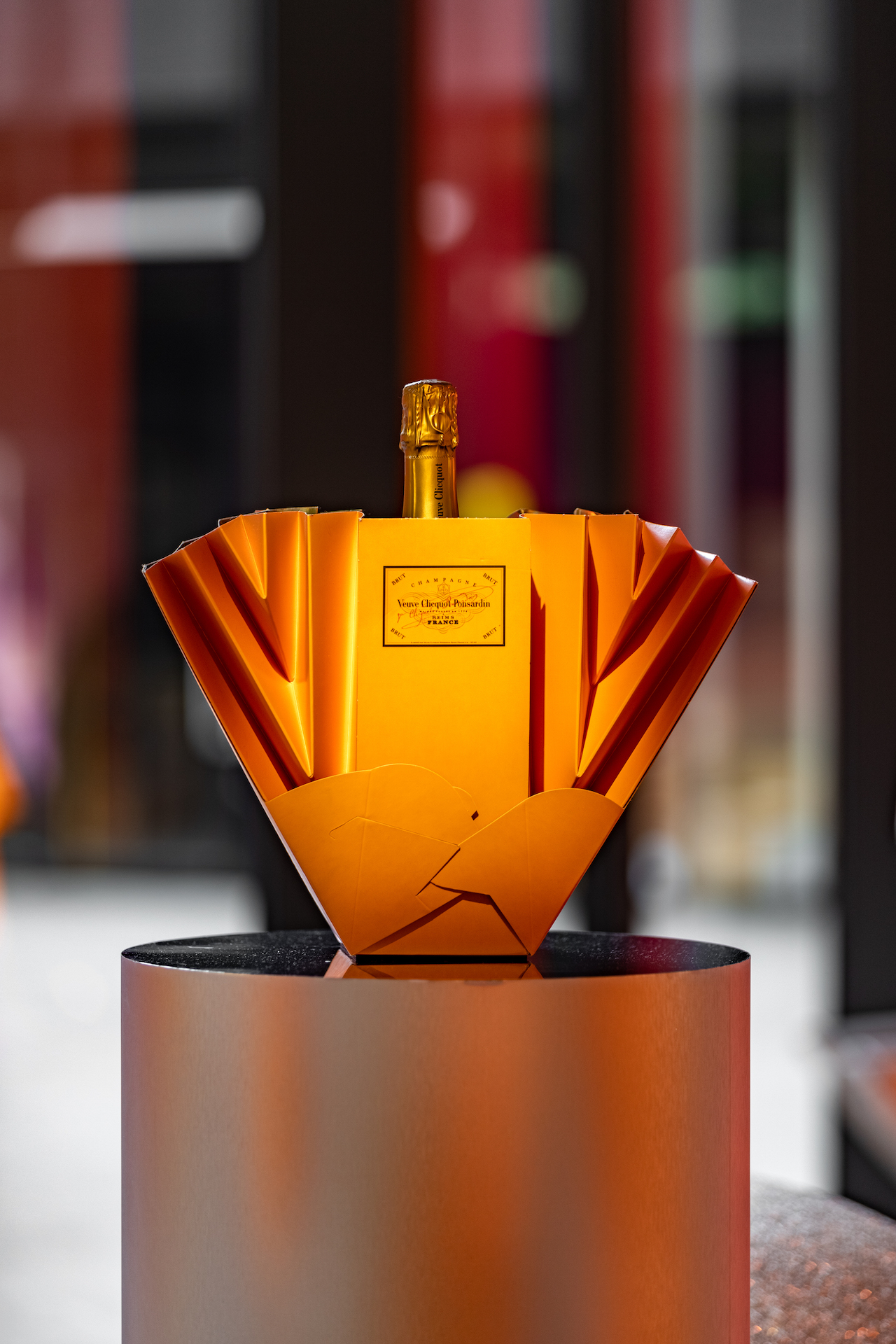
The Solaire Culture exhibit opens in Beverly Hills on Oct. 26 and marks the finale of the year-long festivities. The traveling showcase — to be exhibited at 468 North Rodeo Drive, a space currently hosting Louis Vuitton’s “200 Trunks, 200 Visionaries” — debuted this June in Tokyo and is set to conclude on Nov. 17.
“We knew that we wanted to create something that could travel internationally. This has long been an ambition of the house and Madame Clicquot,” Bildé explains of the exhibit that is free and open to anyone over 21. “We wanted to showcase the incredibly rich heritage of the House with more than 80 archival objects and historical pieces that we have in our possession, which will be on display for visitors for the first time in the U.S.”

“Most of all,” she adds, “we wanted to honor Madame Clicquot’s entrepreneurial, creative spirit and further our support of women by partnering with 10 female artists to each create a unique piece inspired by Madame Clicquot and the Solaire nature of our House.”
French curator and art historian Camille Morineau and French designer, interior architect and scenographer Constance Guisset created the exhibit to pay homage to 250 years of the brand.
For the commissioned artwork, Morineau assembled a diverse range of artists, both up-and-coming and established, such as Sheila Hicks, Tacita Dean, Pénélope Bagieu and Moyoco Anno. She also chose women who would work differently with color and light through their techniques, including renowned Japanese artist Yayoi Kusama who reinterpreted a portrait of Madame Clicquot. “It’s quite a complex project and it has taken a long time to come together, but, in my view, it is really unique and will allow visitors to have a multisensory experience while being in line with the spirit of ‘the grande dame de la champagne,’” says Morineau.
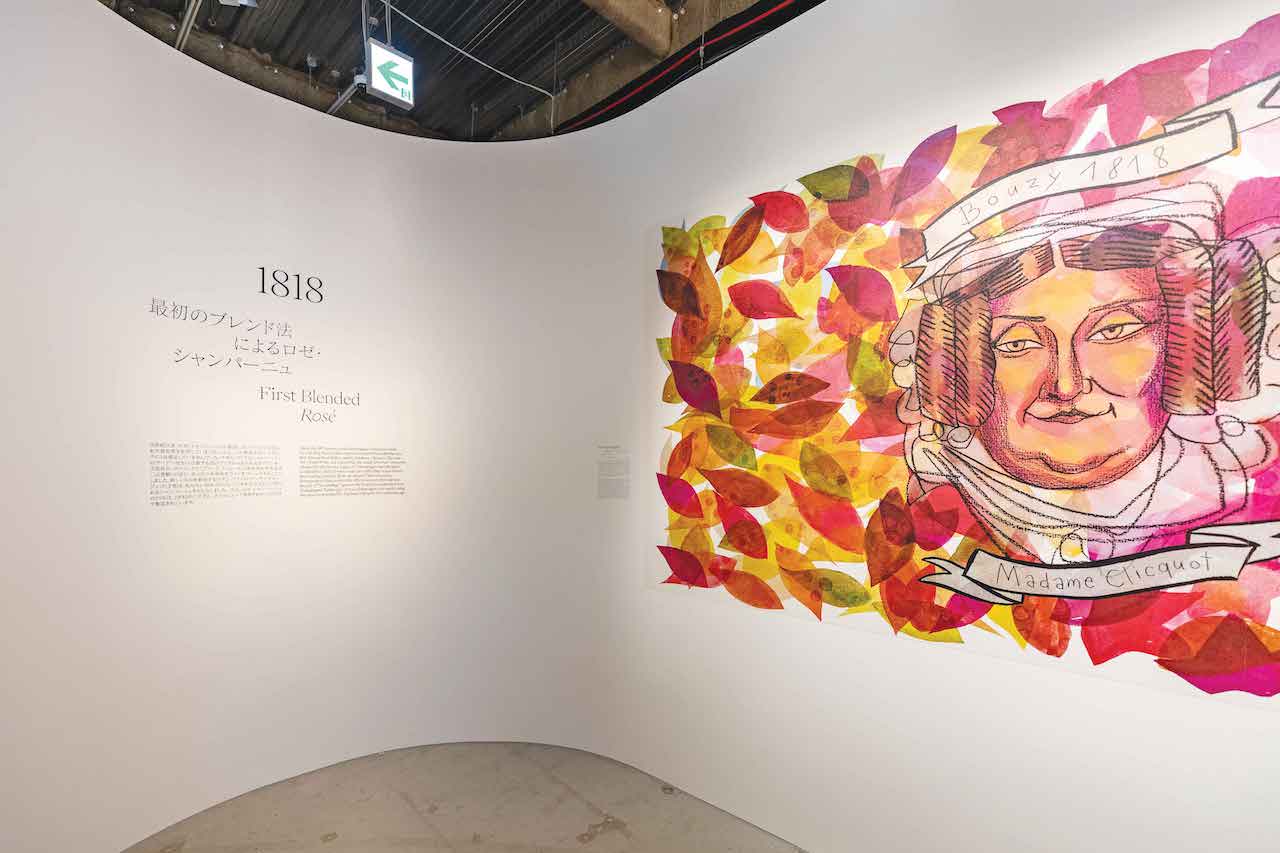
For Guisset, working with the artists was an empowering experience. “It was fantastic to meet every artist and go deep into her mind to understand the piece and see how it would live with others, installing virtual conversations that the visitors will feel or see clearly,” she explains. “It was interesting to see how they would take the challenge themselves to embody Madame Clicquot’s spirit. I am always surprised how different people on the same subject always propose pieces that you would never expect. Artist’s minds are always unpredictable.”
Though the house has a storied history, Morineau tells GRAZIA USA she strived to ensure the exhibit isn’t “too museum-like, too classical,” but instead “forward-thinking, much like Madame Clicquot herself.”
Objects on display will include a bottle found in 2010 in the Baltic Sea from an 1840s shipwreck, an original signed letter written by Madame Clicquot, and vintage posters from the brand. “It’s incredible to be face to face with this rich history,” Morineau says. “I found it quite interesting to see how Madame Clicquot placed an emphasis on curating relationships and organic marketing to expand her business. She was a woman far ahead of her time.”

To build out the space and define the atmosphere, Guisset says she drew upon “the house’s iconic yellow, connection to the sun, and roundness to play with effects that create a really dynamic space, light and deep at the same time.” There are also touches of midnight blue throughout, which was used to keep guests’ “concentration on the content and give depth to what is presented.” The approach also helped control the light on very fragile documents. Guisset says one of the most exciting elements is the display of bottle labels from over the years, on which guests can see how the signature yellow hue serves as a visual emblem of the champagne brand’s “solaire” philosophy.
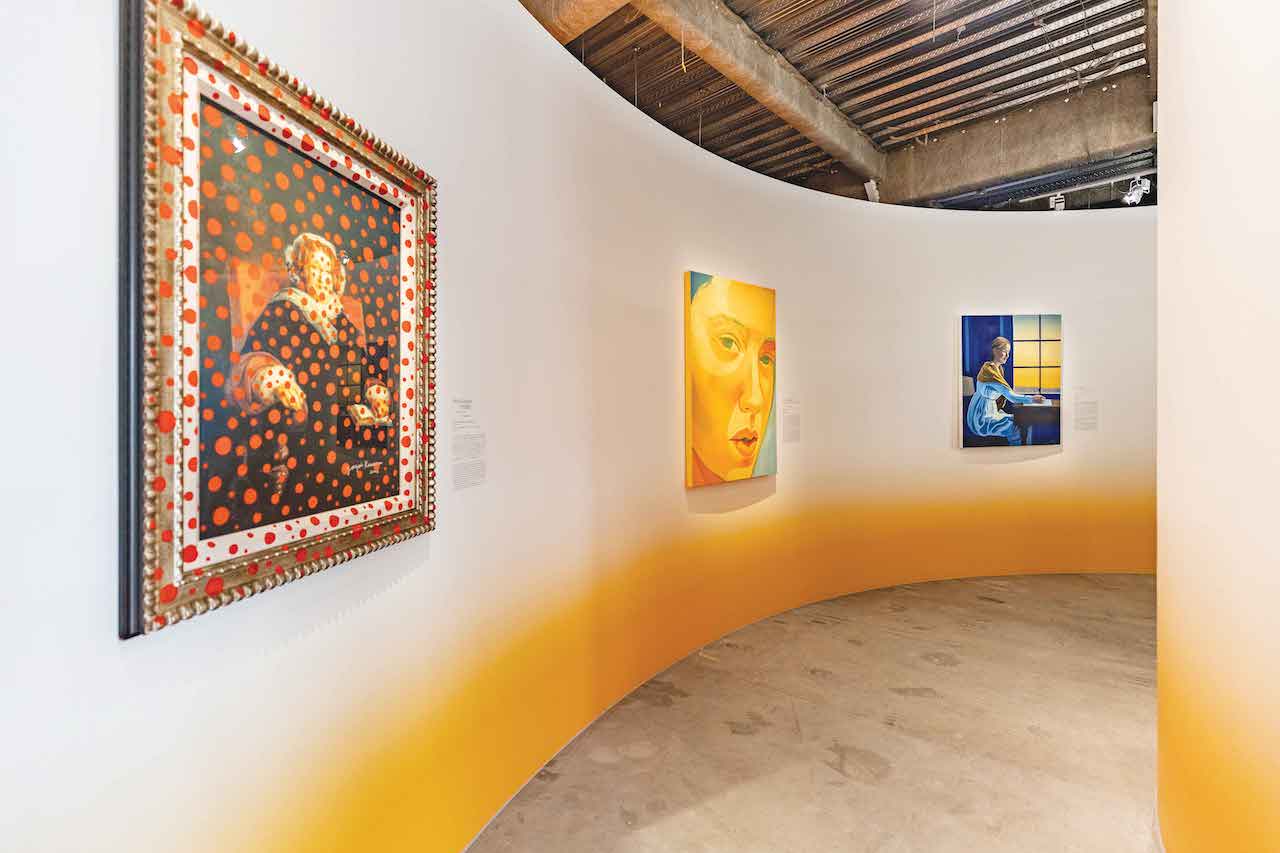
“Solaire,” Morineau notes, “is about bringing unbridled optimism into your endeavors, whether in art, business or everyday life.”
Once the 250th-anniversary festivities wrap, Bildé says the “solaire” spirit will continue through the brand’s other initiatives, including Bold by Veuve Clicquot, a program to improve inclusion, impact, and visibility of female entrepreneurs. The company will also increase its sustainability efforts to reach its commitment to reduce emissions 50 percent by 2030.
Morineau hopes those who visit the exhibit will leave feeling inspired and optimistic. “Madame Clicquot faced obstacles in relation to her age and gender, though she did not let that discourage her from taking control of the brand and leading it to success that has stood the test of time,” she says. “No matter your obstacle, there is a way to achieve what you set your heart and mind to.”
Guisset also believes those who experience the space will feel empowered to be more daring and live in a way that puts possibility at the forefront. “Madame Clicquot was not afraid to take risks and that is what made her so successful in building up Veuve Clicquot,” she says. “As viewers leave, we hope they will take a piece of this with them and create audacious change in the spaces they occupy.”
Cheers to that!
Read GRAZIA USA’s Fall issue featuring cover star Nicola Peltz Beckham:
GRAZIA USA’s 2022 Fall issue will be available for purchase on newsstands nationwide in October. Email [email protected] to subscribe.













